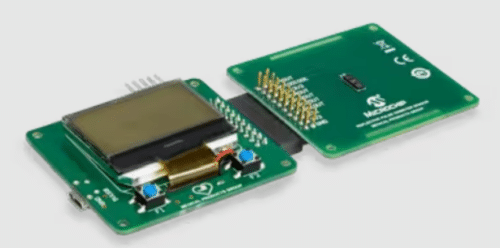The design shows wearable heart rate monitoring with a single 8-bit microcontroller, using Phase Division Multiplexing to measure signals without interference and reduce costs.

Designing wearable medical devices today involves combining heart rate monitoring with other health and compliance tracking. Most wearables measure heart rate with reflective monitors. These monitors often struggle with noise despite using advanced and costly circuits like Analog Front End (AFE) chips.
Finding a cheaper way to reduce this noise is crucial. The demonstration board for wearable heart rate monitoring from Microchip illustrates how you can accurately measure heart rate using just a single 8-bit microcontroller (MCU). It uses a Phase Division Multiplexing technique to measure various signals at once without interference.
This method uses the PIC16F1779 MCU’s built-in Core Independent Peripherals (CIPs), allowing for a low-noise design and cutting down on costs compared to traditional methods.
The design highlights the capabilities of using a single-chip setup to measure heart rate effectively. It utilizes the eXtreme Low Power 8-bit microcontroller (MCU), which incorporates several integrated features.
One key feature is the Phase Division Multiplexing technique that allows for the simultaneous measurement of multiple signals without any signal interference, known as cross talk.
This integration significantly lowers the overall bill of materials (BOM) cost thanks to the use of Core Independent Peripherals (CIPs) and built-in analog functionalities.
The CIPs also help in reducing software overhead, enhancing the system’s efficiency. The MCU includes integrated 10-bit Digital-to-Analog Converters (DACs) and operational amplifiers (op amps) that precisely control the LED intensity, crucial for accurate heart rate detection.
Additionally, Configurable Logic Cell (CLC) CIPs are employed to manage the LED driving directly, thus eliminating the need for CPU involvement in this process. This setup not only simplifies the design but also enhances performance while keeping costs low.
The MCU used is highly integrated, featuring both Intelligent Analog and digital components suited for a variety of applications including lighting, power supplies, battery charging, motor control, and other general purposes.
These devices are equipped with multiple operational amplifiers, 5-/10-bit DACs, high-speed comparators, a 10-bit analog-to-digital converter (ADC), 10-/16-bit pulse-width modulators (PWMs), and a Programmable Ramp Generator (PRG).
They also include other peripherals that enable the creation of closed-loop systems internally without needing external pins or additional PCB space.
The MCU can drive sophisticated functions like an LED dimming engine using the 10 and 16-bit PWMs, Digital Signal Modulator (DSM), and tri-state output operational amplifiers.
The Peripheral Pin Select (PPS) feature adds flexibility, simplifying the PCB layout and enhancing peripheral utilization by allowing users to remap digital peripheral pins to any input/output pin. This versatility makes these microcontrollers ideal for efficiently handling complex tasks across multiple applications.
Microchip has tested this reference design. It comes with a bill of materials (BOM), schematics, assembly drawing, printed circuit board (PCB) layout, and more. The company’s website has additional data about the reference design. To read more about this reference design, click here.
Also, check 5 Interesting Reference Designs For Wearable Electronics.







